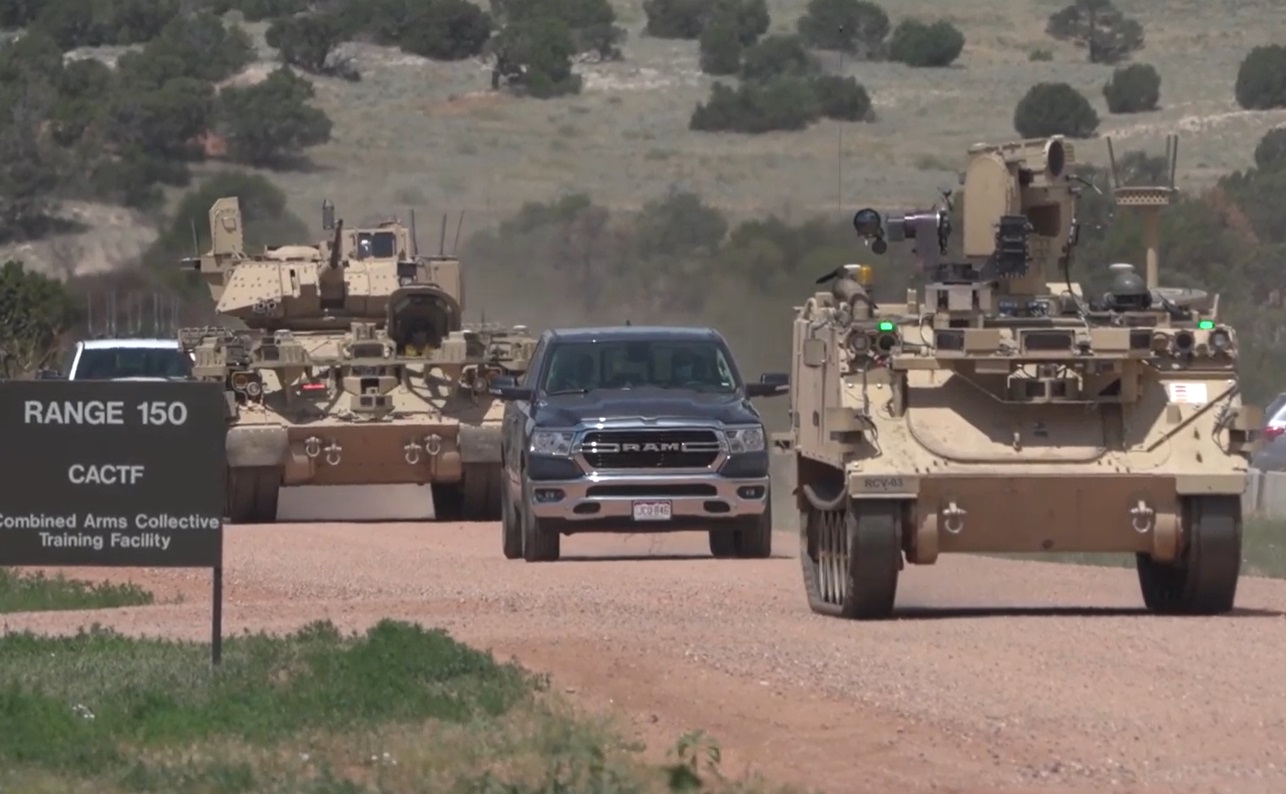The US Army had received the light and medium prototypes of the Robotic Combat Vehicles (RCV-L and RCV-M) from industry teams in 2021. Once the services received these prototypes, a small team began working on the prototypes to prepare them for a full company-level evaluation in the near future.
DECODED: Why China’s Route To ‘Super Power’ Status Is Highly Dependent On Maritime Supremacy & PLA Navy
The US Army had held a major prototyping competition in May 2019 for developing robot combat vehicles which were believed to provide the country with an edge in Iraq and Afghanistan.
The Army selected QinetiQ North America as the winner of the contract for building four RCV-L prototypes and Textron for building four RCV-M prototypes, according to a service release on January 9.
“Robots have the potential to revolutionize the way we conduct ground combat operations. Whether that’s giving increased firepower to a dismounted patrol, breaching an enemy fighting position, or providing [chemical, biological, radiological, nuclear, and explosive] reconnaissance, we envision these vehicles providing commander’s more time and space for decisions and reducing risk to soldiers,” Brig. Gen. Ross Coffman, director of the Next Generation Combat Vehicles Cross-Functional Team (NGCV CFT) had said.

Shortly after the delivery of these prototypes, soldiers from the 3rd Infantry Division also conducted two weeks of live-fire testing of the RCV for the robot battle buddy which is expected to perform parallel to the next-generation combat vehicle, as reported by Army Times.
The Alpha Company, 1st Battalion, 28th Infantry Regiment soldiers from Fort Benning, Georgia, held platoon-level live fires with the RCVs at Camp Grayling, Michigan, in late April 2021. These tests were first performed on a prototype platform before the delivery of the actual prototypes by the industrial developers.
During the live-fire testing, soldiers used remote controls from behind a berm and located targets with the help of drone video feeds. Once the targets were located, the soldiers struck these enemy vehicles with the M249 Squad Automatic Weapons, M2 .50 caliber machine guns, and Mk19 grenade launchers, which were mounted onto the RCV stand-in.
The RCV-L is a diesel-electric hybrid vehicle with a gross weight of roughly 85,000 pounds and a maximum payload of 7,000 pounds. The vehicle can travel at a speed as high as 40 miles per hour. The RCV-M is also a diesel-electric hybrid vehicle and has a gross weight of 25,000 pounds. This vehicle can travel at high speeds of over 25 miles per hour and is also equipped with a 30 mm cannon which is controlled remotely, Defense News reported.
Modernized Equipment
According to reports, several modernized military types of equipment such as robots, tanks, self-propelled artillery, and infantry carriers are all going to be welcomed by the US Army in 2022. Many military experts are describing the coming year as “the year of the armored vehicle”.

According to Brig. Gen. Glenn Dean, the Army’s program executive officer of ground combat systems, the investments made by the Army in the past eight to ten years are all going to come into action in the year 2022.
In a statement to The National Interest, Dean said that the Army is going to begin the fielding of the Bradley A4 Infantry Fighting Vehicle to its 8th Brigade. The same brigade is also going to be the recipient of the upgraded Abrams tank.
All of these developments have been observed at a time when the Army has made various breakthroughs in the field of networking and artificial intelligence-based data processing and sharing as well as in reducing the time between the sensor and the shooter.
The Mobile Protected FirePower platform, which is the Army’s light tank, is also taking a huge step ahead as the service has begun making selections for its next phase.
Apart from these, the Army is also set to receive its first upgraded version of the Self-Propelled Howitzer 155 mm artillery cannon. The Army has also made steady progress in the development of its Optionally Manned Fighting Vehicle. The service has awarded various development deals to defense contractors to provide architecture designs for the new infantry carrier.
The Army is more focused on the aspects of digital engineering and computer simulations which are expected to form the conceptual and technological base for the service’s first Optionally Manned Fighting Vehicle.

Each one of these advanced pieces of military equipment is developed keeping in mind a unique set of requirements and has a specific mission to perform. Many of these new combat vehicles are being developed for performing in a multi-domain battlefield which is an integral part of modern warfare and exchange surveillance and targeting specifics with fighter jets, drones, dismounted units and also Navy ships, according to The National Interest.
“We need armored vehicles on the battlefield”, Maj. Gen. Ross Coffman, told The National Interest. “We need them in places of really, really dangerous position. And ‘22 is going to launch the United States above any other country in the world based on the efforts that in the entire team we’re doing today”, he added.
- Written by Kashish Tandon/EurAsian Times Desk
- Contact the author at: kashishtandon21@gmail.com
- Follow EurAsian Times on Google News





